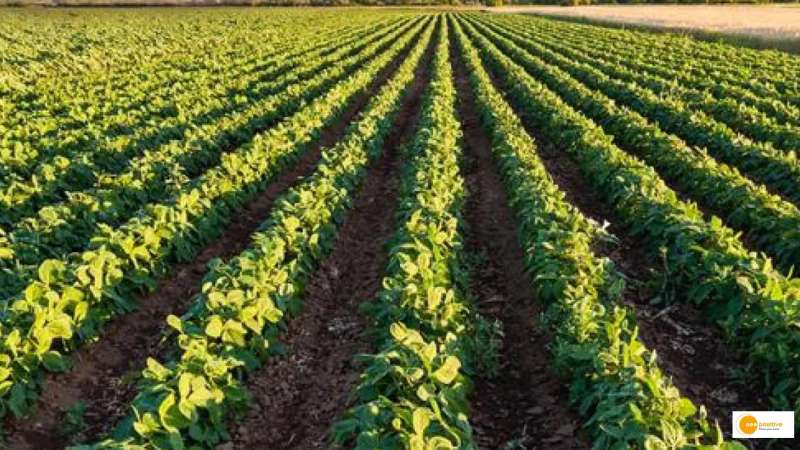

As our world population continues to rise, and the impacts of climate change become increasingly apparent, ensuring long-term food security has become a top priority.
And considering the situation, have you tried giving Sustainable Agriculture a thought?
Luckily, sustainable agriculture presents a promising solution for the food security concern. By embracing environmentally friendly practices, sustainable agriculture strikes a harmonious between productivity and the needs of future generations.
Here, we will embark on an exciting journey, exploring a range of innovative practices and strategies that not only promote suitable sustainable agriculture but also pave the way for a future where food security is guaranteed for all.
Let’s explore some of the innovative strategies for long-term food security.
Sustainable Agriculture strategies that guarantee long-term food security
1. Conservation agriculture: It is an innovative approach that focuses on minimizing soil disturbance, maintaining soil cover, and diversifying crop rotations. By reducing soil erosion, enhancing water retention, and improving soil quality, conservation agriculture fosters sustainable farming practices. Minimum tillage or no-till farming, coupled with the use of cover crops, helps preserve soil structure, organic matter content, and biodiversity.
Limiting the usage of heavy equipment, this strategy also lowers greenhouse gas emissions while conserving energy. By fostering sustainable soil management, increasing
crop yield, and reducing the effects of climate change, conservation agriculture helps to ensure long-term food security.
2. Agroforestry: It is a sustainable land-use management system that integrates trees, crops, and livestock on the same piece of land. By combining agriculture with tree planting, agroforestry offers numerous benefits.
For instance, the tree provides shade, windbreaks, and erosion control, while their deep-rooted systems enhance soil fertility and moisture retention. Agroforestry systems promote biodiversity, increase crop yields, and offer a wide range of products such as fruits, timber, and fodder. The integration of livestock further enhances nutrient cycling and adds economic value. Implementing agroforestry practices helps combat deforestation, enhances resilience to climate change, and improves long-term food
security by diversifying production systems.
3. Precision Agriculture: Precision farming, commonly referred to as smart farming, makes use of technology to maximize resource efficiency and reduce negative effects on the environment. In order to monitor and manage crop health, soil conditions, and irrigation requirements, automation, data analytics, and sensors are used. With the use of precise information provided by precision agriculture, farmers can make data-driven decisions that reduce their usage of pesticides, fertilizers, and water. This strategy not only cuts costs but also lessens potential harm to ecosystems, waterways, and soil. In an agricultural environment that is rapidly changing, precision agriculture encourages sustainable resource management, boosts productivity, and helps ensure long-term food security.
4. Vertical Farming: Growing crops in vertically stacked layers or hydroponic systems, frequently in urban settings, is known as vertical farming. This approach utilizes controlled environments, artificial lighting, and efficient water and nutrient management to maximize crop production in limited spaces. Vertical farming offers several advantages, including reduced land use, minimized water consumption, and protection against weather-related risks. By eliminating the need for pesticides and reducing transportation distances, it also decreases the environmental footprint of food production. The production of fresh produce near to consumers is made possible by vertical farming, which helps urban regions with limited land supply achieve long-term food security while minimizing reliance on conventional agricultural methods.
5. Regenerative Agriculture: Regenerative agriculture is an approach to farming and land management that aims to restore and enhance the health and fertility of the soil, while also promoting biodiversity, sequestering carbon, and improving water quality. It goes beyond sustainability by actively seeking to regenerate ecosystems and create resilient farming systems.
Conclusion
The use of novel techniques and approaches in sustainable agriculture holds the key to ensuring long-term food security in a world that is changing quickly. The transformative strategies that address environmental issues while enhancing productivity and resilience include conservation agriculture, agroforestry, precision agriculture, and vertical farming. By putting these strategies into reality, we can lessen soil erosion, improve water and nutrient management, encourage biodiversity, and cut back on greenhouse gas emissions. These tactics help farming communities remain economically viable while simultaneously preserving our natural resources. It is critical to engage in research, policy assistance, and farmer education to scale up these creative techniques as we face the challenge of feeding a growing global population sustainably.


